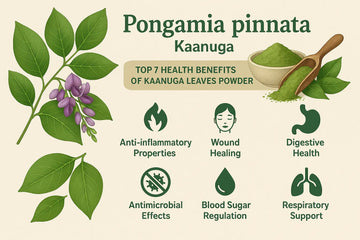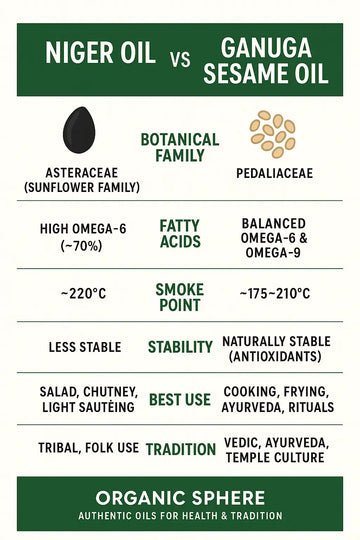The Ancient Grains Renaissance: Einkorn, Emmer (Khapli), and Khorasan (Kamut)
Jun 19, 2025
In a world where modern wheat dominates the shelves, a quiet revolution is taking place. Ancient grains like Einkorn, Emmer (Khapli), and Khorasan (Kamut) are making a comeback. These grains, cultivated thousands of years ago, offer nutritional benefits, unique flavors, and improved digestibility compared to modern wheat. Let’s explore the rich heritage, nutritional power, and subtle differences among these three ancient wheats.
🔹 1. Einkorn Wheat (Triticum monococcum)
-
Botanical type: Diploid (2n = 14 chromosomes)
-
Age: ~10,000 years; the oldest known cultivated wheat
-
Gluten: Very low and simple gluten structure
-
Taste: Mildly sweet and nutty

Nutritional Highlights:
-
Higher protein content than modern wheat
-
Rich in lutein, zinc, iron, and vitamin A precursors
-
Lower glycemic response
Digestibility: Einkorn's unique gluten profile makes it more tolerable for some gluten-sensitive individuals (though it is not gluten-free). It’s also easier on the digestive system and minimally hybridized.
🔹 2. Emmer Wheat (Triticum dicoccum) aka Khapli Wheat in India
-
Botanical type: Tetraploid (2n = 28 chromosomes)
-
Also known as: Khapli Wheat
-
Gluten: More than Einkorn but less than modern wheat
-
Taste: Earthy, robust, slightly chewy texture
Nutritional Highlights:
-
High in fiber, magnesium, and antioxidants
-
Supports healthy blood sugar levels due to a lower glycemic index
Digestibility: Favored in Ayurveda and traditional Indian cooking, Emmer is well-regarded for gut health and ease of digestion. It’s often used by diabetics in India due to its beneficial glycemic response.
🔹 3. Khorasan Wheat (Triticum turanicum) – Branded as Kamut®
-
Botanical type: Tetraploid (2n = 28 chromosomes)
-
Grain Size: Larger than both Einkorn and Emmer
-
Gluten: Higher than the other two, but less inflammatory than modern wheat
-
Taste: Rich, buttery, nutty flavor
Nutritional Highlights:
-
Rich in protein, selenium, zinc, and essential lipids
-
Excellent for sustained energy due to its nutritional density
Digestibility: Although richer in gluten, some people find Kamut easier to digest than conventional wheat. It’s a popular choice among athletes and those seeking nutrient-dense whole grains.
✅ Summary Comparison Table
| Feature | Einkorn | Emmer (Khapli) | Khorasan (Kamut) |
|---|---|---|---|
| Chromosomes | 14 (Diploid) | 28 (Tetraploid) | 28 (Tetraploid) |
| Age | Oldest | Ancient | Ancient |
| Gluten | Lowest | Moderate | Higher than others |
| Grain Size | Small | Medium | Large |
| Flavor | Mild, nutty | Earthy, chewy | Rich, buttery |
| Key Nutrition | Lutein, zinc, protein | Fiber, magnesium, iron | Selenium, protein, lipids |
| Digestibility | Easiest | Good | Moderate |
🌾 Conclusion: The Grains of the Future Rooted in the Past
As health-conscious consumers seek alternatives to processed foods and heavily hybridized wheat, these ancient grains offer a path back to wholesome, nutrient-rich eating. Einkorn is perfect for those with sensitive digestion; Emmer is ideal for fiber and metabolic health; and Khorasan packs an energy punch for active lifestyles.
Choose your grain with intention — and let your food connect you with millennia of human wisdom.
"Let food be thy medicine and medicine be thy food." — Hippocrates





